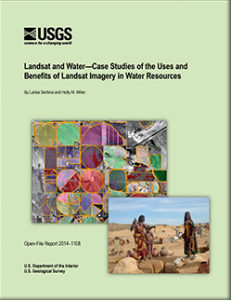
A new report by Larisa Serbina and Holly M. Miller contains a set of case studies focused on the uses and benefits of Landsat imagery. The purpose of these is to shed more light on the benefits accrued from Landsat imagery and to gain a better understanding of the program’s value. The case studies tell a story of how Landsat imagery is used and what its value is to different private and public entities. Most of the case studies focus on the use of Landsat in water resource management, although some other content areas are included.
Case Studies
+ Landsat’s Role in Water Resource Management
Further Reading
+ Get Full Report from USGS






